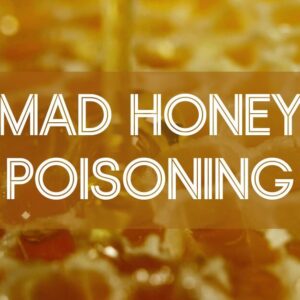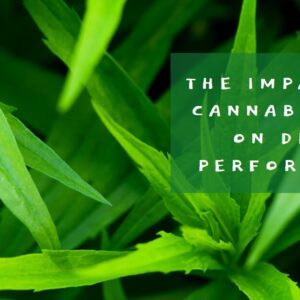In the exciting realm of sports, where athletes strive to reach their full potential, there exists a darker side known as doping. Doping involves the use of substances to enhance performance, jeopardizing the integrity of competitions and putting athletes’ well-being at risk.
However, in the battle against this unfair practice, toxicology, the scientific study of the effects of chemicals on living organisms, plays a vital role. Toxicology assists sports authorities in analyzing athletes’ samples to detect traces of prohibited substances. This scientific process is crucial in unveiling the hidden world of doping and ensuring that sports maintain their fairness and authenticity.
This article delves into the workings of toxicology in the context of preventing doping. From testing urine and blood to utilizing biological passports, we will explore the methods and substances targeted by toxicology. Additionally, we will also examine the challenges and ethical considerations that arise while employing toxicology to uphold the cleanliness and integrity of sports.
In the pursuit of fair and genuine competition, toxicology acts as a guardian, exposing those who attempt to cheat. It is not solely about apprehending the wrongdoers; it is about guiding sports toward a future characterized by fairness, transparency, and the true essence of athletic excellence.
So, let’s see how toxicology ensures that the playing field remains equitable for all athletes.
Understanding Toxicology in the Context of Doping
Toxicology, in the world of sports, involves studying the harmful impacts of chemical substances on living beings. When it comes to doping control, toxicological examinations are carried out to detect and measure banned substances. These analyses play a crucial role in providing vital evidence for anti-doping authorities.
Methods of Toxicological Analysis
- Urine and Blood Testing:
- Urine Testing: This method is widely used for doping control. Athletes submit urine samples, which are later examined for the existence of prohibited substances or their byproducts. The World Anti-Doping Agency (WADA) maintains a comprehensive list of banned substances, including anabolic steroids, stimulants, and masking agents.
- Blood Testing: Blood samples can be gathered to identify substances that are more easily detected in blood, like erythropoietin (EPO). EPO helps increase the production of red blood cells, which in turn improves endurance.
- Hair Analysis:
- Hair samples have the incredible ability to serve as a historical archive of substance use. This technique proves especially valuable in identifying substances that can be detected over a longer period of time. Since hair grows at a slow pace, it holds onto traces of substances, making it an excellent source for analysis.
- Biological Passport:
- The athlete’s biological passport serves as live documentation of specific blood and urine indicators. Any deviations from an individual’s normal levels can suggest the usage of substances that enhance performance, leading to a deeper inquiry.
Significance of Toxicology in Doping Control
- Detection of Performance-Enhancing Drugs:
- Toxicology plays a crucial role in detecting substances such as anabolic steroids, human growth hormone (HGH), and EPO that boost an athlete’s physical abilities.
- Deterrence and Fair Play:
- Rigorous toxicological testing plays a crucial role in deterring athletes from engaging in doping practices. It promotes fair play by ensuring a level playing field for all athletes, fostering a competitive environment.
- Health and Safety of Athletes:
- Toxicology plays a crucial role in not just identifying performance-enhancing drugs, but also in ensuring the well-being of athletes. Certain banned substances can pose significant health hazards, and their detection is essential in safeguarding athletes from any potential harm.
Challenges & Future Developments
1. Evolution of Doping Methods
The battle against doping is an ongoing game of hide and seek. As officials enhance their skills in identifying familiar substances, those attempting to deceive them are always finding new ways to cheat.
From custom-made drugs to genetic manipulation, the field is constantly evolving. This requires constant exploration and advancement in toxicology to stay ahead of the game and effectively identify emerging substances and methods.
2. Technological Advancements
The ever-changing landscape of technology presents both advantages and obstacles for toxicology in doping control. State-of-the-art analytical tools and techniques can improve detection abilities, but they also demand substantial investments and continuous training for staff.
Staying on a level with technological progress guarantees that toxicology continues to be a powerful tool in the fight against doping.
3. Ethical Considerations
The ethical concerns surrounding toxicological analyses in sports bring up questions about the rights and privacy of athletes. It is a constant challenge to find a balance between thorough testing and respecting individual freedoms.
By finding the right ethical equilibrium, we can ensure that doping control measures are strong while still upholding the dignity and rights of athletes.
4. Global Consistency
Doping control standards and regulations differ from country to country and sports organization to sports organization. It is a constant challenge to achieve worldwide consistency in interpreting test results, imposing sanctions, and implementing anti-doping protocols.
By harmonizing these efforts on an international level, we can improve the effectiveness of toxicological analyses and unite against doping in sports.
5. Budgetary Constraints
Conducting thorough toxicological analyses demands a considerable amount of financial investment. Numerous sports organizations, particularly those at lower levels, may encounter financial limitations that hinder their capacity to establish strong testing initiatives.
It is vital to bridge this financial gap in order to guarantee that doping control measures are accessible and efficient across all levels of sports.
Conclusion
Toxicology proves to be a valuable asset in the ongoing fight against doping in sports. By carefully examining biological samples, not only do we expose illicit practices, but we also uphold the values of fair play and the health of athletes.
As technology and methods progress, toxicology will remain at the forefront of safeguarding the integrity of sports and promoting fair and healthy competition for athletes across the globe.






